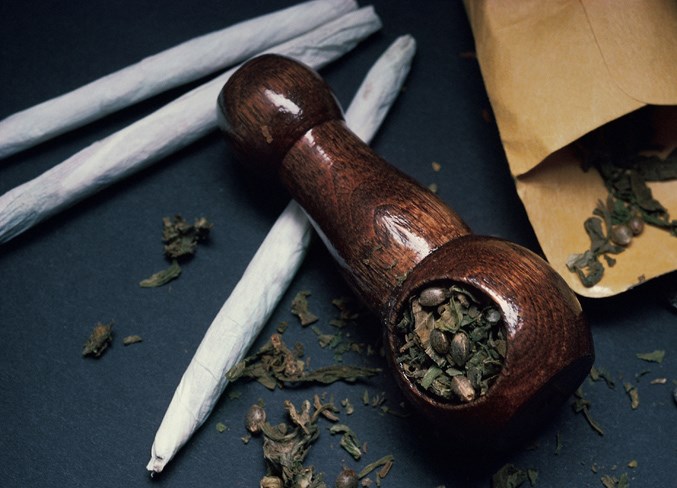Following the official end of recreational cannabis prohibition, Alberta Health Services (AHS) has recently been holding public awareness presentations to help people sift through misinformation.
About a dozen people attended a presentation by Gail Foreman, a registered nurse and tobacco reduction specialist for AHS central zone, on Wednesday, Nov. 28 at the Sundre Municipal Library.
The decision to legalize cannabis was largely driven by a general public health concern, she said, adding consequences were exacerbated by prohibition.
While the reality about cannabis is rather different from narratives pushed by old propaganda films such as the 1936 Reefer Madness, Foreman said there nevertheless exist health concerns that must be addressed so people can make informed decisions.
She discussed health impacts of cannabis and relative harms as compared to other drugs, as well as the potential for developing a dependency. Among the most common questions raised during her presentations pertain to how the substance affects young people, she said.
“Everybody’s concerned about the impact on youth.”
Like alcohol and tobacco, cannabis also acts on a developing brain, and early use substantially increases the risk of dependency, she said.
“The more you delay, the less likely you are to see harmful repercussions,” she said, adding one of the key messages from health professionals to young people is to “wait, wait, wait” as long as possible.
Other questions raised pertain to certain demographics such as people with mental disorders, seniors who want to know more about medicinal cannabis, as well as pregnant women, she said, adding there is some misinformation out there regarding using cannabis to treat morning sickness or nausea.
She said there is no safe level of consumption for women who are pregnant or breastfeeding, as well as people who have been diagnosed with a mental illness, adding there is also no safe level of exposure to second-hand cannabis smoke.
Just because cannabis is a plant that grows naturally, does not mean it is completely benign, she said.
“‘Natural’ doesn’t mean safe,” she said.
Also covered during her presentation was the difference between legal and black market product. The former is regulated under strict quality control measures and the latter typically leaves the consumer unaware of important information about the level of THC — the product’s primary psychoactive compound — in relation to CBD — the compound typically associated with medicinal benefits — or whether other substances might have been laced.
She said today’s cannabis is much different than what was on the market decades ago and levels of THC have grown significantly, increasing potency.
But unlike alcohol or opioids, she said there has never been a recorded overdose death resulting from cannabis consumption. However, health professionals prefer to use the term toxicity, as there is a potential danger that stems from illicitly produced product that typically packs a powerful punch, she said.
With an unknown strength of a strain purchased from the black market, the chance of toxicity becomes much greater, which in turn increases the potential for the user to experience a panic or anxiety attack that might result in erratic and risky behaviour leading to injury or worse, she said.
Additionally, cannabis — legal or illegal — could also potentially be a trigger, but not the cause of, a psychotic condition for a person who has a genetic predisposition or undiagnosed mental illness, she said.
“That’s why we recommend people with a family history of mental illness refrain from trying it.”
Health officials also recommend people avoid mixing the use of cannabis with other substances and to never operate a motor vehicle under the influence, she said.
Another consideration for cannabis-consuming Canadians who travel is to be aware of other countries’ laws, she said.
People should also be very cautious before accepting any information about cannabis from a source that might have something to gain from the use of its products, she said.
The overall focus of the presentations is to provide resources and harm reduction messages to equip people with the knowledge to mitigate possible risks, she said.
She encourages anyone who is interested in learning more about cannabis as well as other substances to visit www.drugsafe.ca for more information.
“If you are considering trying cannabis, you need to have all of the information so you can make an informed decision.”
Like other drugs, she said it’s important to know the product’s strength and how much can be safely consumed.
“We don’t hyper inflate risks,” she said, adding, “We want to take a cautious approach.”
“For now, we have lower risk guidelines for both cannabis and alcohol. We don’t have them for tobacco — we know the consequences, there’s no safe level of consumption” for cigarettes, she said.
She said one upside of legalization will be facilitating cannabis research, which over the years might yield new information and subsequent advice to further reduce the potential for harm.
“In health care, we hate uncertainty. We like to know with confidence what the effects are,” she said, adding far more is known about alcohol and tobacco than cannabis.
Some evidence has already come to light supporting the use of CBD oil drops, which can help treat a rare form of epilepsy that affects children, she said.
“We’re still learning as science advances.”



